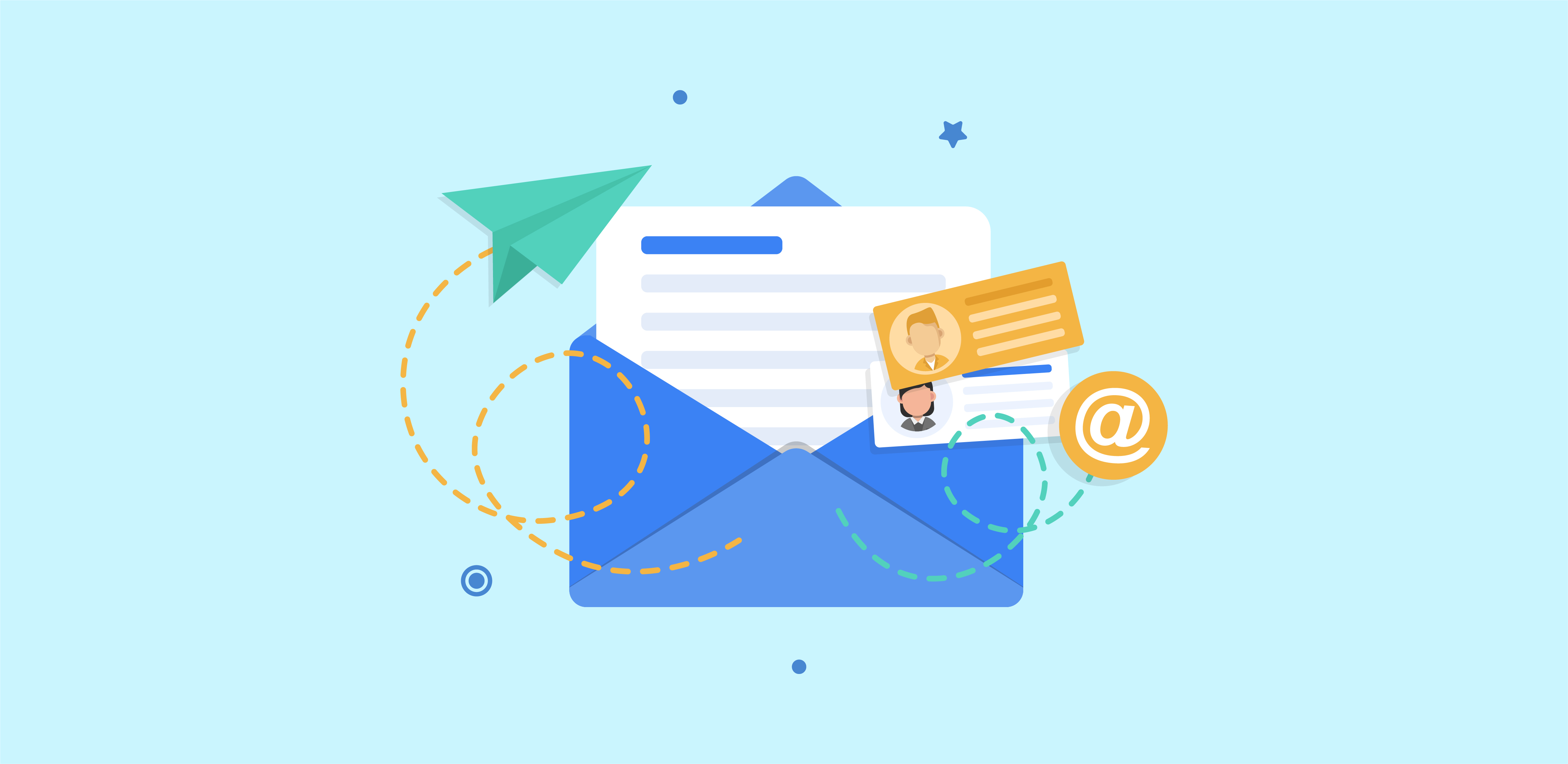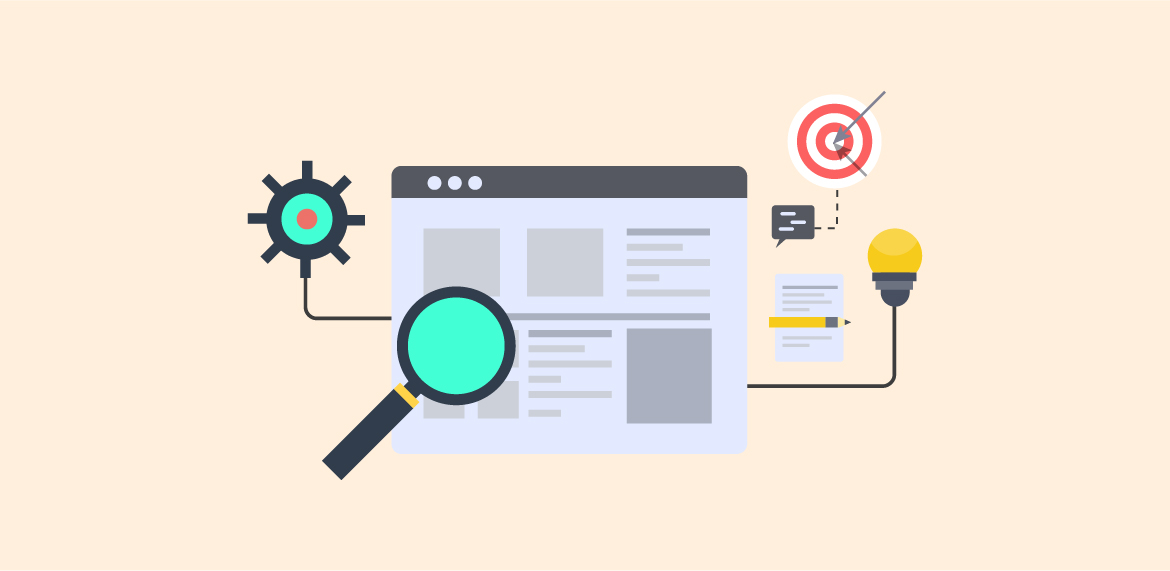- Email Marketing
9 Types of Emails you should be using for Email Marketing

Email marketing is one of the most effective marketing strategies in today’s age. However, the tactics used today are quite different from 1978, when the first marketing emails were sent to the recipients.
Moreover, there are many different types of emails that are crafted and sent by brands today to their target audience. While it’s common for these emails to have different objectives and rationales, sometimes certain email campaigns even cater to specific personas for the brand to resonate better and provide a sense of belonging. In this article, we’ll discuss all these types of emails and their pros and cons so that you can opt for the ones most pertinent to your brand’s style and communication.
1. Welcome Emails
Welcome emails are often sent when a brand gets a new subscriber or a new signup or simply when a visitor provides their email address to the website. The main purpose of welcome emails is to build an acquaintance with the recipient.
Pros
Breaks the ice and establishes rapport
Welcome emails serve as great icebreakers. They help you establish rapport with a new user, effectively welcoming them and beginning communication effortlessly. With the right welcome email, you can easily introduce your product to potential customers and pique their interest to convert.
Higher open and Click-through rates
Another reason why welcome emails are so common among brands is that they have an amazingly high open rate of 91.43% (Hive.co). Also, their click-through rate, or CTR, is quite impressive, standing at 26.90%.
Cons
There is a chance of a wrong first impression
A welcome email needs to accurately cater to your audience. Failure to do so can mean that the brand will set a bad first impression, which can turn out to be detrimental over time.
2. Email Newsletters
Newsletters can encompass a lot of marketing email content. While typically email newsletters are often used to keep your target audience updated with what your brand is up to, there are times when these can be used to communicate promotional offers as well.
Pros
Regular Communication with the Audience
As newsletters are often sent as a part of a routine, either monthly or weekly, they provide brands with an opportunity to consistently communicate with their target audience. This allows you to keep your rapport and stay atop in the minds of your customers.
Content Announcement
Email newsletters are often the key method through which you can inform your audience about any new content that you might have come up with. You can entice them to visit your blog and gain consequent traffic.
Diverse Applications
Newsletters also allow brands to experiment with different styles and note how recipients react to them. Moreover, newsletters don’t have to be limited to new content creation. You can use newsletters to simply inform your potential customers about any new story or any new tip.
Cons
Can be a Hit or Miss
While newsletters come under the types of email marketing that can be sent unanimously to all subscribers, this also presents a risk as some demographics of your audience may not prefer certain iterations. As you’re unable to tailor newsletters specifically, you have to keep them as generic as possible.
Design and Development can be lengthy
Newsletters typically have to be engaging and thus need creative design elements to appeal to the users. But designing is just one part of them. In fact, email newsletters also need to be developed such that they are responsive to different screen sizes. If email newsletters aren’t responsive, they might leave a bad impression on the users.
3. New Offer Emails
These types of emails are specifically sent to your audience to tell them about unique and limited-time offerings.
Pros
Specific in Call to Action
New Offer emails are usually only focused on a single CTA, making sure that you target your customers for a specific offering.
Templates can be set
Templates can minimize the time it takes to create an email and enable you to send new offers quickly.
Easy to track progress
New offer emails are short specific campaigns, enabling marketers to easily track the progress.
Cons
Can disrupt consistency
If new offer emails are sent against the set newsletter routine, they can disrupt the consistency of communication with your target audience.
4. Lead Drip Emails
Lead drip emails are often created to target specific factors of different audience segments. These emails are usually sent in the form of a series, with an interval after every email. In most cases, the focus of these types of marketing emails is to educate the audience and get the potential lead curious, driving them towards conversions.
Pros
Can be automated
Marketers can set drip campaigns where emails are scheduled to be sent over a time period.
Target user personas
As drip emails target user personas, they resonate well with your audience.
Cons
Bad at providing short-term conversions
Since drip campaigns are focused on educating your audience, blatant sales have to be avoided. In other words, you won’t be getting immediate conversions.
Marketers can forget about them, leading them to be underreported
Keeping track of multiple drip emails over a long time period requires extreme vigilance, and a slight oversight can lead to progress being underreported.
5. Re-Engagement Emails
Re-engagement emails are sent to a specific stratum of your audience that has been inactive towards your brand. The idea is to gain back the rapport earlier established and renew communications.
Pros
Reconnect with Dormant Leads
The marketing email content in re-engagement emails is specific to dormant leads, which allows brands to reconnect with them.
Cons
Can annoy recipients
If a lead is not interested, sending them multiple emails to get their attention can annoy them, leading them to unsubscribe or put your emails into spam.
6. Case Study emails
These email marketing types present the perfect opportunity for your brand to showcase its achievements to your potential customers. If done right, these can establish your brand as an authority and a trustworthy entity.
Pros
Resonate with your Audience
Case study emails sent to the relevant audience can resonate with their requirements and motivate them towards conversion.
Cons
They might come out boastful
Case study emails have to be rightly worded. You want to sound confident but not come across your audience as boastful.
7. Video Emails
Video emails can be highly engaging. According to Campaign Monitor, adding a video to your emails can increase your open rate by 6% and Click-through rate by 65%.
Pros
Are much more engaging than regular emails
Videos are more likeable than text and provide a good opportunity to engage well with your audience.
Cons
Require a lot of effort
Crafting videos specifically for your emails can be quite time-consuming, and you might also need to engage designers and developers to create a unique video email.
8. Abandoned Cart Emails
These types of emails are often automated but can work wonders to enhance conversions. The emails are sent when a website visitor adds your product to their cart but does not check out, leaving the conversion incomplete. Noting this, your system sends an email to the visitor reminding them about their abandoned cart.
Pros
An opportunity to gain conversions
Abandoned cart emails are a neat method to gain conversions from visitors who might have forgotten about their visit to your website. This ensures that you can convert a maximum number of website visitors.
2. Automated
Unlike most other email marketing types we discussed, abandoned cart emails are set into the system, allowing you to automatically reach out to your customers and keep them informed about their cart.
Cons
Repeated emails may be seen as spammy
Abandoned cart emails can also be sent repeatedly. However, if the lead has lost interest in your offering, there is a chance that your email might fall under spam.
9. Transactional Emails
Transactional emails are also set up to be sent automatically. However, instead of solely being a type of marketing email, these are triggered as a result of an act made by your website visitor. These can range from confirming an action made by the visitor to a simple thank you email being sent for a completed conversion.
Pros
High Click-Through Rates
Transactional emails typically have high click-through rates. This happens because, in most cases, your website visitor expects to receive an email. Moreover, these can also enclose special offers that can lead to repeated customers.
Cons
Can be seen as a nuisance to the user
It could be argued that, at times, transactional emails may feel like a bit of a nuisance, especially when the user has to open and respond to it to complete the action.
Final Thoughts
Email marketing has been around for years for all the right reasons. It is a great way to get hold of new customers as well as retain existing ones through a communication channel that can be customized too. However, the key to success is choosing the right type of email marketing as per your business structure and needs. So assess your requirements and get set to elevate your numbers through this profitable marketing platform.
Kickstart your first project
- Easy Order Process
- Vetted team of writers
- 100% original content



